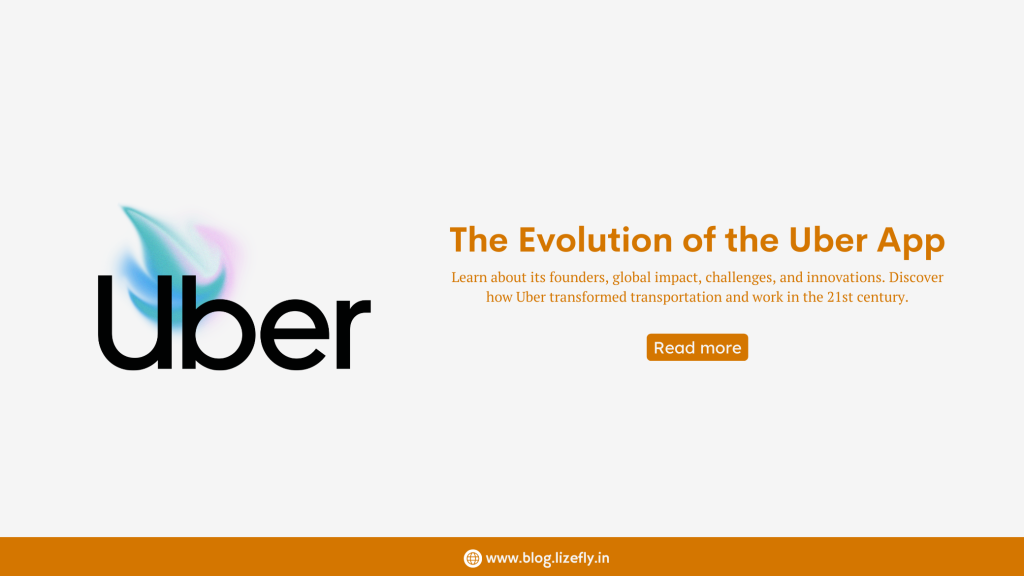Uber complete case study :In today’s fast-paced world, the ridesharing giant Uber has revolutionized the way people commute, turning transportation into a seamless and convenient experience. This comprehensive case study delves into the inception, growth, and impact of Uber, shedding light on its journey from a simple idea to a global phenomenon.
Introduction: The Birth of Uber

The Brainchild of Travis Kalanick and Garrett Camp
Uber was founded in 2009 by Travis Kalanick and Garrett Camp in San Francisco, California. Their aim was to create an innovative solution to the age-old problem of hailing a taxi.
The First Uber Ride
On March 31, 2010, the first-ever Uber ride took place in San Francisco. This marked the beginning of a transportation revolution.
Uber’s Business Model – Uber complete case study
The Platform Business Model
Uber’s business model is based on a two-sided marketplace, connecting riders and drivers through a user-friendly mobile app.
The Gig Economy Revolution
Uber played a pivotal role in popularizing the gig economy, providing flexible income opportunities to countless drivers worldwide.

Global Expansion
The Uber Effect on Transportation
Uber expanded rapidly, disrupting traditional taxi services in cities around the world and offering a more convenient alternative.
Regulatory Challenges
The company faced numerous regulatory challenges, raising questions about the legality and safety of its services.
Uber’s Impact on Society – Uber complete case study
Reducing Drunk Driving
Studies have shown that Uber’s availability has contributed to a decrease in drunk driving incidents.
Economic Impact
Uber has created job opportunities and income for millions of drivers globally.
The Uber Experience – Uber complete case study
User-Friendly Interface
The Uber app’s user-friendly interface made it easy for people of all ages to book rides.
Competitive Pricing
Uber’s competitive pricing strategy attracted cost-conscious consumers.

Uber’s Challenges and Controversies
Data Breaches and Privacy Concerns
Uber faced backlash due to data breaches and privacy concerns, leading to legal repercussions.
Workplace Culture
Reports of a toxic workplace culture at Uber raised questions about its corporate ethics.
Uber’s Response to Challenges
Leadership Changes
Uber underwent leadership changes to address its internal and external challenges.
Safety Measures
The company implemented safety measures to enhance rider and driver security.
Conclusion – Uber complete case study
In just over a decade, Uber has reshaped the transportation landscape worldwide. Its innovative business model, global expansion, and societal impact have made it a case study in the annals of modern business.
In this detailed Uber complete case study, we delve into the fascinating journey of Uber, the ridesharing giant that has revolutionized the way we think about transportation. Founded in 2009 by Travis Kalanick and Garrett Camp, Uber started as a simple idea to make hailing a taxi more convenient. Fast forward to today, and Uber has become a global phenomenon, reshaping urban mobility, the gig economy, and even safety standards.
We begin by tracing Uber’s roots, exploring the minds behind the company and the very first Uber ride in San Francisco in 2010. Then, we dissect Uber’s business model, emphasizing its role in popularizing the gig economy and connecting millions of riders and drivers through a user-friendly mobile app.
The case study takes a deep dive into Uber’s global expansion and its transformative effect on the transportation landscape. We explore the challenges the company faced, from regulatory battles to privacy concerns, and how it responded with leadership changes and enhanced safety measures.
Moreover, we highlight Uber’s positive impact on society, from reducing drunk driving incidents to creating job opportunities for countless individuals worldwide. We discuss the user-friendly experience of the Uber app and its competitive pricing, making it a preferred choice for commuters.
But it’s not all smooth sailing for Uber. We address the controversies and challenges it encountered, including data breaches, privacy issues, and concerns about workplace culture. Yet, Uber adapted and evolved, learning from its missteps and working to improve its corporate ethics.
In conclusion, Uber’s journey from a startup to a global behemoth is a remarkable case study of entrepreneurship, innovation, and disruption. It has not only changed the way we travel but also influenced the way we think about transportation and work in the 21st century.
Explore the complete case study for a comprehensive understanding of Uber’s past, present, and future in the world of transportation and technology.
FAQs
1. Is Uber available in every country?
Uber operates in over 900 metropolitan areas across the globe, but availability varies by region.
2. How does Uber ensure rider safety?
Uber has implemented safety features such as background checks for drivers and in-app safety tools for riders.
3. What challenges did Uber face during its early years?
Uber faced challenges related to regulatory compliance, legal disputes, and competition from traditional taxi services.
4. How has Uber contributed to the gig economy?
Uber has provided income opportunities to millions of individuals who work as independent contractors, embracing the gig economy.
5. What is the future of Uber?
The future of Uber includes further expansion, diversification of services, and continued innovation in the transportation industry.
Also Read

